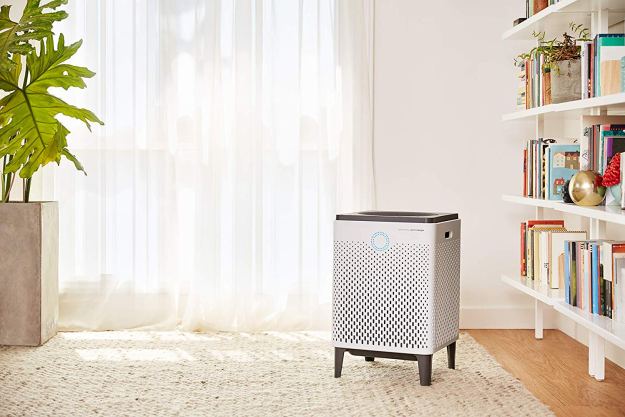In October, I was watching TV with some friends when I got a “Poor air quality” alert on my phone. It had nothing to do with smog; it was coming from inside the house.
Luckily, the pizza I was making hadn’t burned, but some errant cheese was turning brown on the bottom of the oven. The resulting smoke — which I hadn’t noticed — had traveled from my kitchen, through the living room, to my bedroom. The Airmega 400S air purifier I was testing out had picked up that the air was less than fresh and sounded the alarm to the app on my phone.
If I had the Wi-Fi-enabled air purifier set to smart mode, it would have just kicked on and started purifying the air, no questions asked. Instead, because I had it set to turn on for regularly scheduled cleanings, the push notification suggested I turn on the device from the app. I did, and the air went from very unhealthy to moderate to good in the space of a half hour.
The rectangular box (22.8 by 14.8 by 14.8 inches) weighs nearly 25 pounds. It has a white plastic case hiding two pre-filters and a Max2 filter. The gray top has a concave circle with slats that the fan’s air blows through. It points straight up, so it won’t cool you down unless you are hovering over it. This is also where you will find the controls. On the right is the power button and a touch-activated slider that lets you move from smart mode to sleep mode, as well as select a fan speed. The left side has buttons for the light and Wi-Fi, as well as one for the pre-filter and Max2 filter. When the pre-filter light comes on, that means you will need to wash it. If the Max2 button lights up, it is time to replace that filter.
The two pre-filters are easily reached by pulling on the handles on either side of the Airmega. After a few weeks of use (I had my pre-filter wash frequency set to three weeks), I found some dust and cat hair waiting when I pulled out the pre-filter. The Max2 filter catches 99.97 percent of pollen, pollutants, and other allergens, according to the company. It needs to be replaced yearly. Once you have washed or replaced the filters, you hold down the respective button to reset the clock.
The $849 400S is $100 more expensive than the non-app controlled version. Both can clean areas up to 1,560 square feet. The smaller 300S and 300 can clean 1,256 square feet ($749 for the smart version, $649 for the non-app-controlled one). That is definitely a lot of coverage, more than many competitors. But it’s also a single-use device. Dyson adds a fan and heater into a smaller package for its $600 air purifier.
In the app, you will be able to set schedules, turn on the Airmega remotely, and get a graph of your indoor air quality for the day, week, month, and year.
Except for that blip with the pizza, my air quality was almost always 100 percent. Though I dutifully scheduled an air scrub every day for a couple hours, I can’t say I was allergy-free for the weeks when I used it. I also had some trouble getting the Airmega back online after having it unplugged for a couple days.
The Airmega is beautiful, smart, and pricey. While it’s nice to know my air is pretty clean, that price is a lot to pay for something that will sit idle — and take up a decent chunk of space — for most of the day.
Editors' Recommendations
- Mila reveals a sleek new humidifier/air purifier combo at CES 2024
- Do air purifiers work?
- 10 tips to make the most of your air purifier
- Want to put a USB-C port on your AirPods case? This video shows you how
- Can a robot vacuum work as an air purifier?


